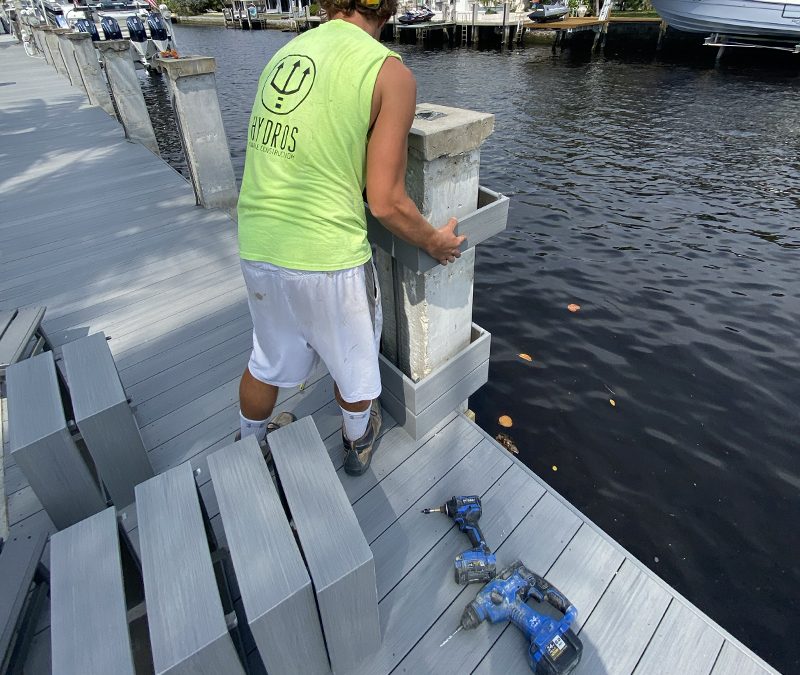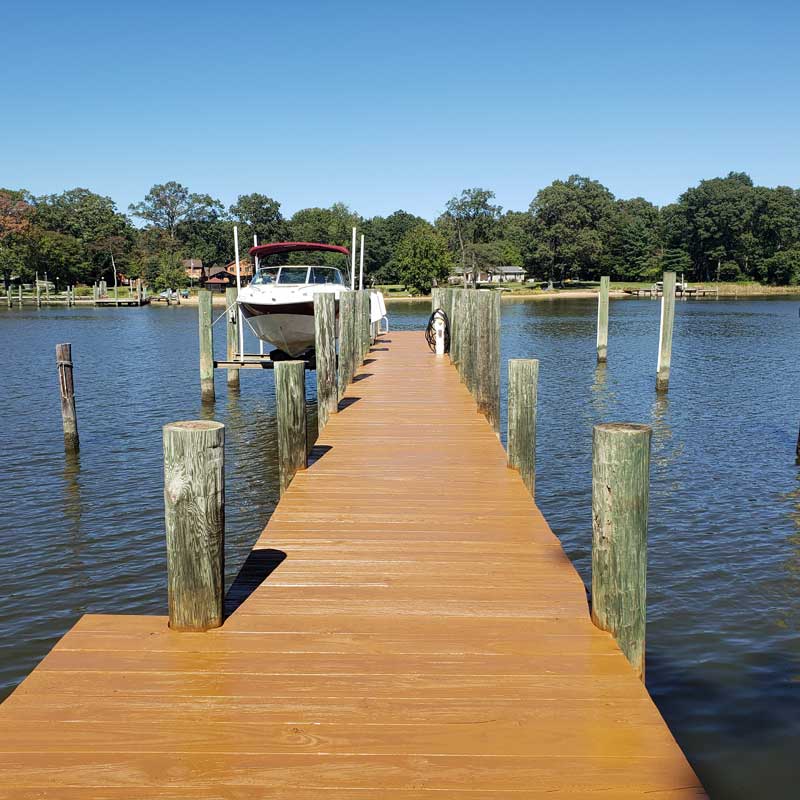How to Pick the Right Service for Your Dock Repairs
How to Pick the Right Service for Your Dock Repairs
Blog Article
Effective Dock Repair Work Techniques: Guaranteeing Structural Stability
Guaranteeing the structural integrity of docks via reliable repair work techniques is extremely important for the long life and safety of aquatic centers. Subsequently, selecting the right repair products, such as corrosion-resistant alloys and composite products, is essential for longevity.
Examining Dock Damage
Assessing dock damage is an important initial action in guaranteeing the architectural integrity and safety of any type of docking center. Secret facets to check out consist of the dock's structure, pilings, outdoor decking, and equipment (Dock Repairs).
Structural engineers or qualified examiners normally do these assessments making use of specialized devices and strategies. Undersea assessments may utilize sonar tools or from another location ran automobiles (ROVs) to find immersed damage. Above water, visual evaluations are matched by utilizing moisture meters and other diagnostic devices to reveal underlying problems not right away visible to the naked eye.

Choosing Repair Work Materials
Picking the appropriate repair work materials is a crucial step in the dock remediation procedure, one that straight affects the long life and efficiency of the fixed framework. Product choice have to be driven by aspects such as ecological problems, load-bearing demands, and compatibility with existing dock elements. Wood is a typical selection for anchors due to its all-natural durability and visual charm. However, selecting the right kind of timber, such as pressure-treated lumber or normally rot-resistant types like cedar or teak wood, is critical to hold up against marine settings.
Along with wood, composite materials are increasingly popular because of their sturdiness and low maintenance requirements. Compounds, normally made from a blend of plastic and timber fibers, provide superb resistance to rot, bugs, and UV damages. For metal anchors, choosing corrosion-resistant alloys such as galvanized steel or marine-grade light weight aluminum is necessary to avoid corrosion and guarantee architectural stability in saline water problems.
Epoxy materials and marine-grade sealants are essential for fixing cracks and securing joints, providing a water-proof barrier and boosting the dock's general toughness. By meticulously choosing top quality products, dock repair services can achieve resilient results, therefore guarding against future destruction and guaranteeing safe, trusted usage.
Structural Support Techniques
Efficient structural reinforcement methods are crucial in making certain the stability and long life of dock repair work. This technique is especially reliable for docks subjected to heavy tons or rough environmental problems.
Another crucial method is the application of fiber-reinforced polymers (FRP) These materials provide high strength-to-weight ratios and outstanding resistance to corrosion, making Dock Repairs them excellent for strengthening wood or concrete anchors. FRP can be applied in sheets or strips and bound with epoxy materials to enhance structural integrity.
Bracing and securing systems also play an essential duty in structural reinforcement. Cross-bracing, making use of metal or wood beam of lights, can neutralize lateral pressures, lowering persuading and movement. Securing systems, such as helical piers or driven piles, give a steady foundation by moving loads to much deeper, much more secure soil layers.
Lastly, the integration of load-distribution plates can aid distribute weight much more evenly across the dock's surface area, reducing localized stress points. These methods collectively guarantee that anchors remain secure and robust, efficient in withstanding the roughness of their operational setting.
Advanced Repair Service Methods

An additional sophisticated strategy includes underwater welding, click over here which enables fixings to be performed without the need to dewater the location. This method is especially beneficial for attending to structural issues in submerged dock elements, making certain marginal disruption to operations. Enhanced welding methods, combined with robotic systems, provide precision and dependability, consequently expanding the lifespan of the dock.
Additionally, cathodic protection systems are implemented to stop rust in metallic dock frameworks. By utilizing sacrificial anodes or pleased present systems, these strategies properly mitigate the electrochemical procedures that bring about product deterioration.
Lastly, advanced surveillance modern technologies, such as architectural wellness surveillance (SHM) systems, supply real-time data on the condition of dock structures. These systems make it possible for aggressive upkeep and prompt interventions, eventually guaranteeing the long-lasting structural integrity of the dock.
Upkeep and Avoidance
Maintenance and prevention are fundamental ideas that underpin the long life and safety and security of dock frameworks. Normal evaluations are critical, enabling early detection of deterioration, potential weak points, and environmental influences. A positive approach, entailing regular look for deterioration, rot, and architectural shifts, mitigates costly fixings and prolongs the dock's functional life.
Safety nets should include applying safety coverings to metal elements to guard versus corrosion and utilizing cured timber to resist decay. In addition, ensuring proper drain and air flow can protect against water accumulation, which is a typical reason of architectural destruction. Incorporating quality materials and adhering to maker standards throughout building and construction and repair phases likewise play vital duties in enhancing resilience.

Training personnel in dock maintenance ideal methods makes sure consistent application of safety nets. Leveraging technical developments, such as drones for evaluations and sensors for real-time surveillance, can additionally improve maintenance initiatives. By prioritizing maintenance and avoidance, dock owners can ensure architectural stability, operational safety and security, and cost-efficient administration over the dock's lifespan.
Verdict
In conclusion, keeping the structural stability of aquatic facilities demands extensive dock fixing methods. Advanced repair methods, coupled with routine upkeep methods, make certain the dock stays secure and operational under diverse ecological problems.
Guaranteeing the architectural integrity of docks via effective repair service strategies is paramount for the longevity and security of aquatic centers.Selecting the proper fixing materials is a critical step in the dock repair procedure, one article source that directly influences the durability and efficiency of the repaired structure.Reliable structural reinforcement strategies are vital in making certain the security and longevity of dock fixings. By focusing on maintenance and prevention, dock owners can make sure architectural stability, functional safety and security, and cost-effective management over the dock's life expectancy.
In final thought, keeping the architectural honesty of aquatic centers demands thorough dock fixing strategies.
Report this page